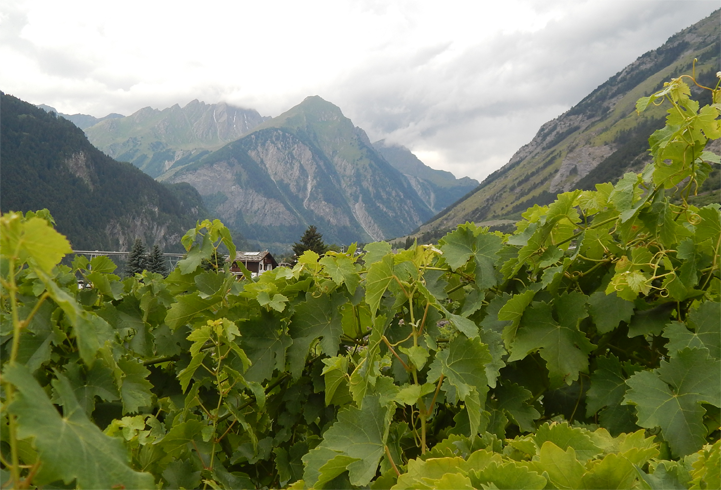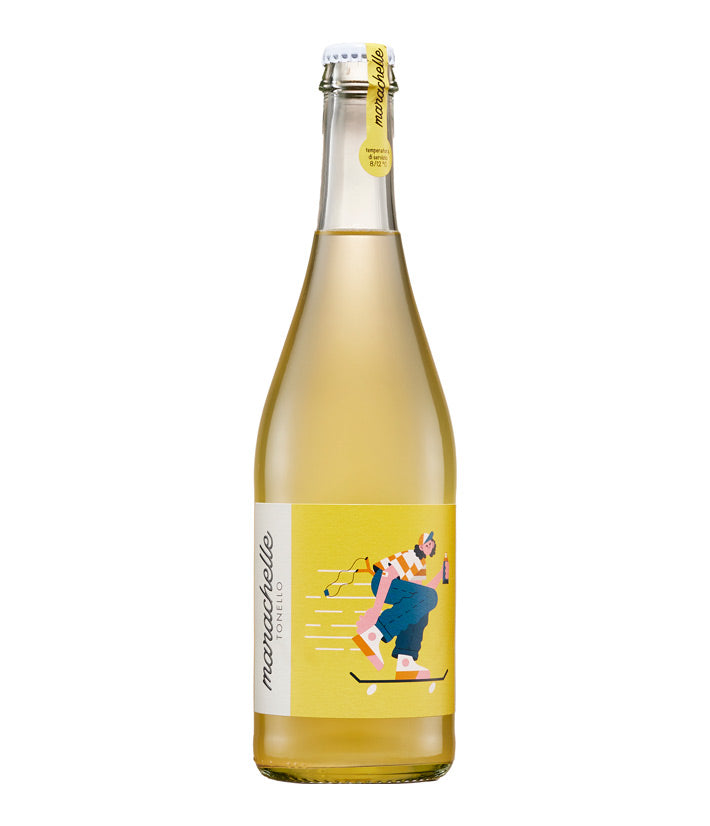
Natural Wine, An Overview
The term ‘natural wine’ has been buzzing around the wine world with ever increasing fervour over the last few years. It began to circulate among a small number of wine producers throughout the world’s wine regions, mainly in Italy and France, but producers all over the world are now embracing the principles of natural wine in increasing numbers.The idea of natural wine is both confusing and controversial: confusing, because there is no legal definition or official charter as to what natural wine is and how it should be made, which permits a degree of free interpretation in the making of natural wine; controversial, because the idea of natural wine challenges the entrenched principles of so-called conventional wine.
The idea of natural wine is becoming ever more appealing to a growing number of consumers who see in natural wine a healthier, more environmentally friendly and sometimes a better tasting alternative to conventional wine. The consequent increasing commercial potential of natural wine, along with the lack of a clear and consistent definition of what natural wine is and how it should be made, however, renders the term vulnerable to manipulation.
You may ask what all the fuss is about; isn’t all wine natural? After all, it’s just grape juice that is fermented into wine. Probably, this is exactly how wine was made in antiquity: grapes were crushed, the juice was left in waiting, preferably in a warm place, and, over time, this grape juice was fermented by the action of wild yeasts present in the environment and on grape skins themselves into what was likely a more or less grapey tasting alcoholic drink. This was a spontaneous process, requiring little human intervention other than placing the grapes in an appropriate receptacle and crushing them. It is unlikely that this primitive wine would satisfy our contemporary palates; it was probably coarse tasting with strange aromas.
Science and technology have revolutionised the way that wine is made, both in the vineyard and in the winery. The modern age has bought with it the industrialisation of agriculture. Mechanisation and the use of synthesised pesticides, herbicides, fungicides and fertilisers have enabled not only the maximisation of crop yields but also the ability to produce healthier and more aesthetically pleasing crops. The modern large-scale winery with its immense shining stainless steel tanks is more akin to a petroleum refinery. Here, every precaution is taken to manipulate the transformation of grapes into high volumes of wine that meet the popular taste. To achieve this, an unthinkable number of chemical and mechanical manipulations can be employed. Filtrations, concentration of the grape juice and the removal of excess alcohol are achieved through mechanical manipulations, while myriad oenological additives can be employed during the fermentation, ageing and bottling phase of the winemaking process in order to adjust acidity, tannin, clarity, colour, aroma, texture and the very taste of wine. The contrast to how our ancient forefathers made wine couldn’t be starker. Theirs was a natural way, but this doesn’t mean their wine necessarily tasted good. Ours is often a denatured way, and usually this means our wine tastes good, at least to a commercially significant number of disengaged wine consumers who seek in wine a moment of relaxation and conviviality, and are certainly not looking for an intellectual experience nor a profound discussion on the intricate qualities of the wine they are drinking.
The degree to which wine can be manipulated, and denatured, is clearly shown in a now famous study published by the French national wine institute, Institut Français de la Vigne et du Vin (IFV). The results of the study are demonstrated in the form of a photograph of four wine bottles representing conventional, organic, biodynamic and natural wine. Each bottle has a label upon which appears a complete list of the oenological additives and the technical manipulations that are permitted in the making of that type of wine. The photo makes very clear the extent to which conventionally made wine can be manipulated. The extreme contrast to conventional wine is the label representing natural wine, where the only accepted additive is sulphur dioxide – used to protect the wine from oxidation and microbial spoilage. The permitted use of sulphur – employed in winemaking since Roman times – in the making of natural wine remains a point of heated debate.
Sulphur along with copper in the form of copper sulphate, also known as Bordeaux mixture, is an accepted and indispensable vineyard treatment not only in conventional viticulture but also in natural viticulture, whether organic or biodynamic, to combat the many fungal diseases to which grape vines are particularly vulnerable. However, copper is a heavy metal, and its prolonged use in the form of copper sulphate has a lasting and harmful impact on the health of the vineyard, depleting the microbial life of the soil that is so vital to the optimum functioning of the grapevine’s root system and therefore its ability to produce high-quality, healthy grapes. The permitted use of copper sulphate in the growing of natural grapes is the great ethical dilemma, and contradiction, of natural viticulture, to this day there is no satisfactory ‘natural’ alternative.
A further contradiction and source of confusion deriving from the lack of a universally consistent legal definition of what constitutes natural wine is the paradoxical situation in which a wine made from naturally grown grapes may actually be less natural than a wine made from conventionally grown grapes. This may seem absurd, but it is a subtlety not always clear to consumers. Wines made from naturally grown grapes can be certified as such. This certification is declared on the wine’s label and will read something like ‘wine made from organic grapes’; the mark of the certifying body is printed alongside this official declaration. Many consumers are unaware that wines made from naturally grown grapes are not necessarily natural wines, and this subtlety will condition their choice to purchase a product that is not exactly what they think it is. Simply put, naturally grown grapes can be turned into wine in an unnatural way, with recourse to all the legally accepted oenological additives and manipulations. The flipside of this absurdity is the producer with a natural spirit who desires to make natural wine but for reasons beyond his or her control is unable to grow natural grapes. This typically occurs in climatic conditions of high humidity where applications of copper sulphate above the maximum limits set for the growing of natural grapes are necessary in order to avoid the devastation caused by the various fungal diseases that flourish in humid climates. These ‘non-naturally’ grown grapes may then be made into wine in a natural way, without recourse to oenological additives or manipulations. There is no legal certification that this wine has been made naturally, albeit from grapes that are not deemed natural, yet the spirit of the wine may be more natural than a chemically manipulated wine made from natural grapes.
A great number of quality conscious producers throughout the world recognisehat a natural approach to both viticulture and winemaking is the only way to obtain not only the highest quality wine but also wine that best captures and reflects the unique climatic and geological conditions of its place of origin, its terroir – that quality of uniqueness in wine that is today so highly sought after. The more a wine is manipulated, whether this be in the growing of the grapes or in the winemaking process, the further it is removed from its natural context, its terroir. This is why most industrial wines produced in high volumes are at best vague expressions of their terroir – the chemical and physical manipulations these wines are subjected to in order to offer a taste that is neutral, homogenous, immediate and widely appealing nullifies the concept of regionality, of terroir.
The idea of natural wine is laudable for both ethical and quality reasons. Many so-called conventional producers make wine in a very natural way, keeping non-natural vineyard treatments and oenological additives to an absolute minimum. The list of permitted additives appearing in the study published by the IFV would shock many consumers. However, scrupulous winemakers will make recourse to only a very few of these additives and often not at all. Many of these additives serve only as a kind of oenological safeguard, to be employed in the event of problems arising during fermentation that may cause wine spoilage – unpleasant tasting and smelling wine – if left unchecked.
The theory, and its practical application, of natural wine is not new – many producers throughout the world have been practising the principles of natural wine, without fanfare, since long before the term entered the consciousness of the contemporary wine world. The various groups and associations that today adhere to a natural winemaking creed have been very successful at promoting their message and ensuring that natural wine has entered the wine mainstream and gained commercial appeal. The natural wine movement has brought to the attention of the wine-drinking public the possibilities of an alternative approach to winemaking and viticulture, an approach that opposes itself to the ever increasing industrialisation of wine production and the consequent homogenisation of taste that this brings.
Wine drinkers have the right to know whether what they choose to drink is natural or conventional. An obligatory list of additives on wine labels could make this possible. Consumers would know that they are in fact drinking what they think they are drinking – natural or conventional.
